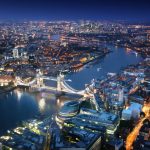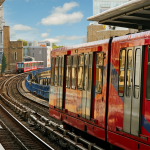CPA Chair Gareth Roberts discusses how the City could become a new hub for café culture.
The best places continuously evolve, and no place encapsulates that more than the City of London.
This historic hub for trading and commerce has welcomed more retail, leisure and cultural uses over recent years and these changes are set to be supercharged by the City of London Corporation’s ambitious Destination City vision. New stats released by Network Rail in December showed Liverpool Street is now the UK’s busiest station, with passenger numbers now at more than 80 million following the opening of the Elizabeth line, underlining a huge opportunity to establish the City as world-class destination moving forward.
Central to this will be the re-imagining of the City’s public realm, including embracing European-style café culture to attract and retain more visitors.
The growth of alfresco socialising during the pandemic shows how this can work in central London and the economic benefits it can deliver. It is estimated that in Soho it saved 80,000 jobs across the hospitality sector, and research undertaken by our sister organisation Westminster Property Association found that half of 18 to 44-year-olds would be likely to visit the West End more often if there was the opportunity to dine outside.
In the City, now is the moment to rethink how we utilise the streetscape – not just to attract visitors but to bring more workers back on a more consistent basis. I would argue that helping to address the uneven return of workers is actually more valuable to the City’s eco-system of cafés, restaurants, shops and bars as it provides more regular and predictable income than seasonal visitors. Indeed, it is workers who will create the vibrancy and atmosphere needed to boost visitor numbers.
To do this, we need to move away from the outdated idea that the City should be configured around the needs of the car. Since the pandemic, the City of London has seen a dramatic fall in the level of motor traffic and most people travel through the Square Mile either by public transport (59.7%) or on foot (31.1%). I am in favour of pedestrianisation in the right places, but it can be a blunt instrument if over-used. The right approach is targeted pedestrianisation and ‘timed access’ for cars and deliveries, whereby streets are adaptable and actively managed so there is a chance to introduce pop-up retail and outside dining at certain times in the week, month or year. This requires a bold approach from the City of London Corporation and a willingness to test ideas, as the authority demonstrated during the pandemic.
Second, we must be mindful that a one-size-fits-all approach will not work. The City, as with the West End, was not master-planned like Barcelona and Paris. It is therefore not possible to bring coherence to all the public realm, but for me that is part of central London’s appeal. We will see individual pockets of café culture emerge in the places where it is most appropriate, with the triangle between Bank, Liverpool Street and the Eastern Cluster providing the most opportunity. This will create a natural curiosity and sense of discovery for workers and visitors alike.
Next, we all need to think differently about how to create more permeability between buildings and public spaces. At British Land, we are focused on democratising the ground floor by creating places that are not just for building users. This approach is evident at 100 Liverpool Street where we have incorporated a 16,000 sq ft lobby with a café, co-working spaces and three entrances.
I am, however, wary of using developments to create additional walkways; this can result in inefficiencies and undermine the density that is vital for the City’s future growth. We need developers and planners to think very carefully about how we use development to enhance the existing public realm and create interesting spaces inside and out of buildings.
Linked to the above is the need for planning flexibility. The best ground floor spaces are multi-purpose and do not easily fit into planning use classes. At Broadgate we have introduced Eataly, an Italian food hall concept that blends a restaurant and bar offer with food ‘laboratory’ space, culinary classes and guided tours, as well as a delicatessen supermarket – and has delivered new terrace spaces and improvements to Bishopsgate. This was all possible because the City of London Corporation relaxed the requirements for an area previously designated as strictly retail.
Finally, in order to make this new vision for the City public realm a reality, we need to see more progress on the deployment of CIL and Section 106 funds. In the first half of this year alone, 4.6m sq ft of commercial space was consented in the City, generating £78m of contributions. In the City Corporation’s last public report in 2021/22, there was over £40mill of unspent CIL (revenue or potential funding). Where the City has identified opportunities to enhance the public realm, there should be a mechanism for accelerating the release of CIL and s106 monies to help unlock more private sector investment and attract the leading businesses and talent the City needs to thrive.
You can find Gareth’s column in React News here.
Further reading:
Report: Visualising Destination City
Speech: CPA Chair Gareth Roberts’ address to the CPA Annual Lunch


